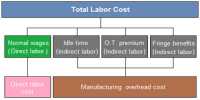The cost benefit principle holds that the cost of maintaining information via the financial statements ought to not exceed its effectiveness to readers.
This is a significant issue from two perspectives, which are:
- Level of detail provided. The corporation controller ought to not spend an excessive amount of time fine-tuning the financial statements with irrelevant adjustments. This also means not providing an excessive amount of supporting information in the accompanying footnotes.
- Types of information required. The regular setting entities need to judge the level of information they need organizations to report in their financial statements, so that the necessities do not cause an unnecessary amount of work for these businesses.
A further concern is that providing extra information requires more time to create the financial statements. If an excessive amount of time passes because of the need to arrange more information, it can be argued that the usefulness of the resulting financial statements is reduced for readers, since the information is no longer timely.
Examples of situations in which the cost benefit principle arises are as follows:
- A company has just acquired a different entity, and finds that there is a few doubt regarding the last outcome of derivatives to which the acquire is a party. An all-embracing total of modeling could define the extent of the probable gains and losses associated with these derivatives, but the cost of the modeling would be $100,000. It is more cost-beneficial for the company to wait a few months for the derivatives to resolve themselves.
- The controller learns that a long-term employee has been unavailable in a low level of petty cash theft for the past few years. The estimated amount of the loss is a few thousand dollars, though an all-embracing review by the firm’s auditors could most likely pin down a more precise figure, at the cost of a $10,000 audit. The controller elects to skip the audit, since the cost-benefit affiliation is so poor.












